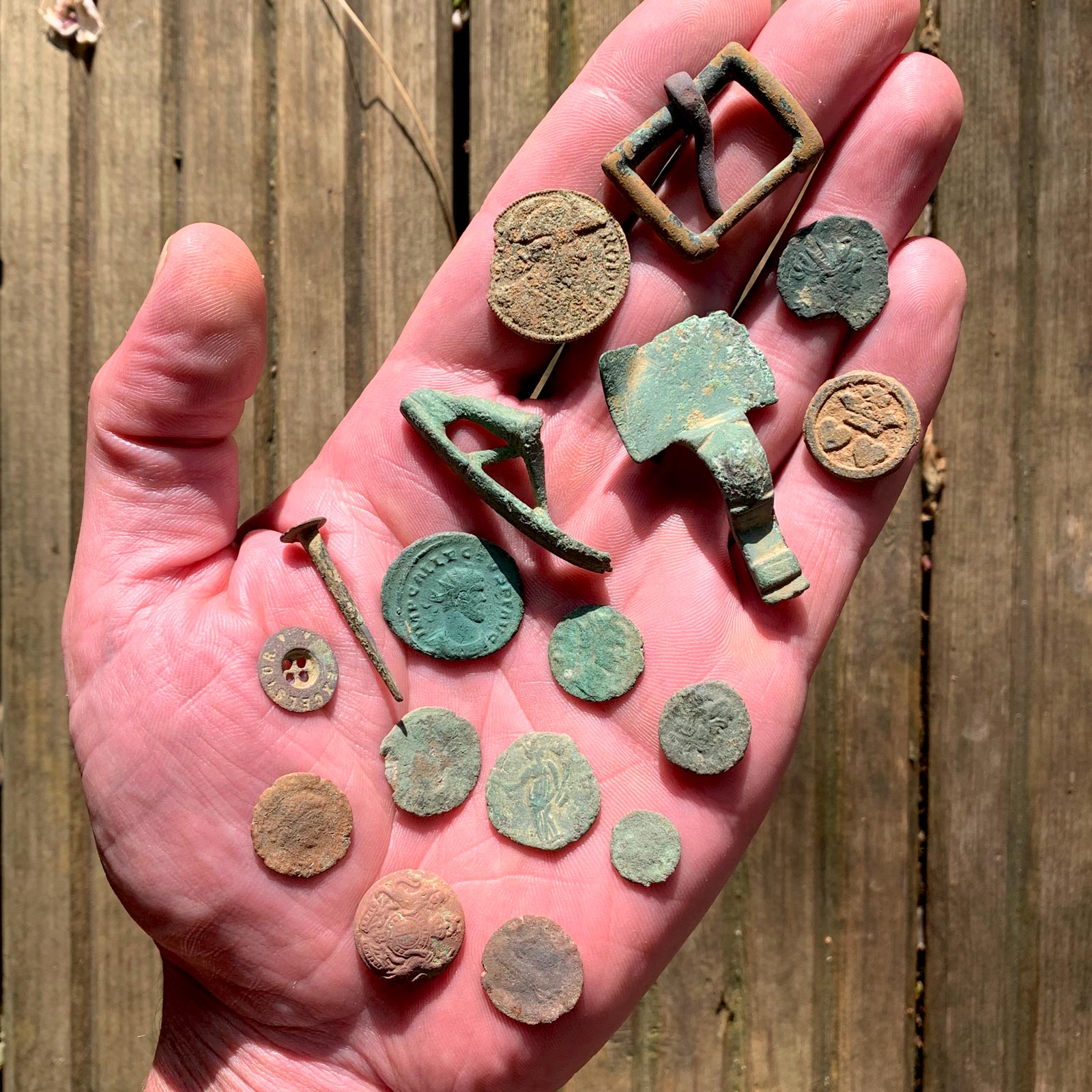
still noisy at weston
I do consider myself to be incredibly lucky to have a permission that keeps on giving, and it gives in many ways. The obvious being the finds that it has been producing which at this point in time include Celtic, Roman, Anglo-Saxon, Medieval as well as more modern finds from the past few centuries. But this also gives me an imense amount of history to research and write about which every now and then filters through into Treasure Hunting Magazine in the form of an article.
The last article I wrote was about this very permission and it was the story of the journey that has taken place here up until the point of writing that article. Since then the permission has been out of bounds due to the crops going in, but one field has become available again and it’s the field that started to get busy with Roman finds at the beginning of this year. I feel compelled to write a short blog about it because on the first day back it has produced a wealth of history again!
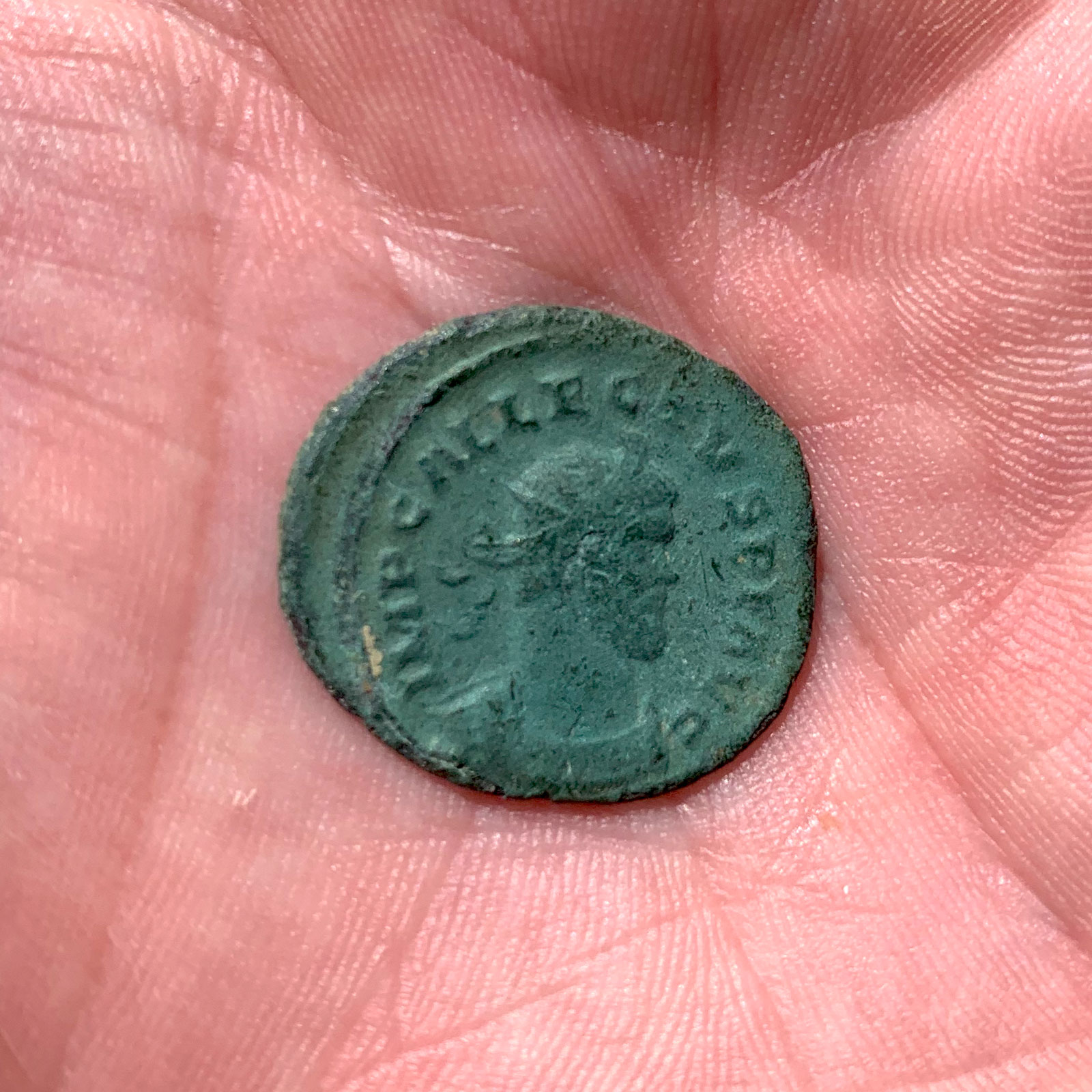
Antoninanus of Allectus Obverse (293-296AD)
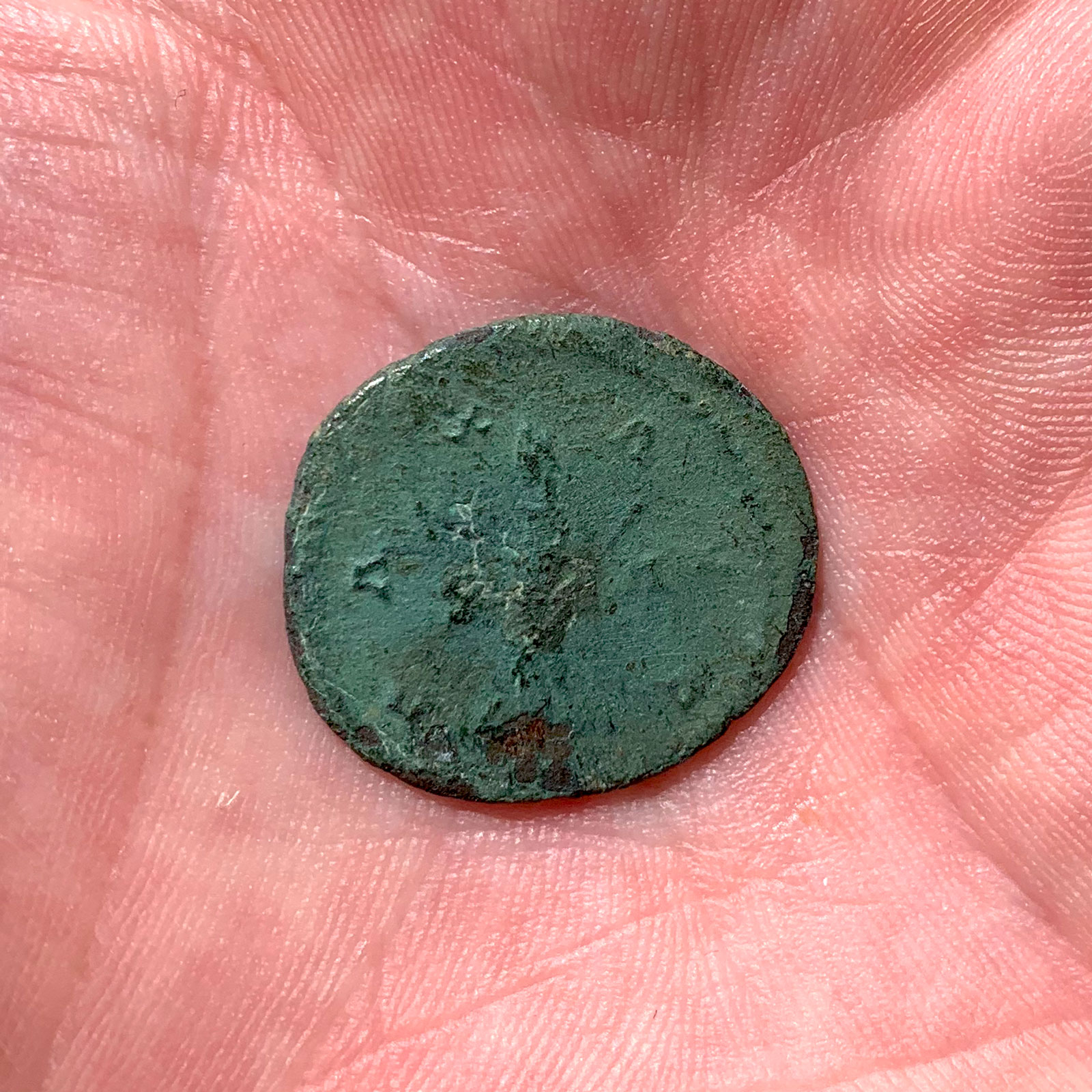
Antoninanus of Allectus Reverse (293-296AD)
This is partly down to the fact that I have upgraded my Equinox 600 to an Equinox 900. I believe that some of it is due to the capabilities of the new machine, but it’s also to do with me learning the new set up. Consequently I have been digging every signal to get an idea of what sounds and VDI’s match with what metals and I think the combination of these things has resulted in such a good haul in a single day!
Again the majority of finds were later examples of coins from the Roman occupation, a lot of which were in poor condition but there was a lovely Antoninanus of Allectus which stood out as you can see by the photos. There were also a couple of buttons, a buckle, a token of Admiral Rodney and part of a set of cufflinks which were apparently produced to commemorate the marriage of Charles II to Catherine of Braganza (1662).
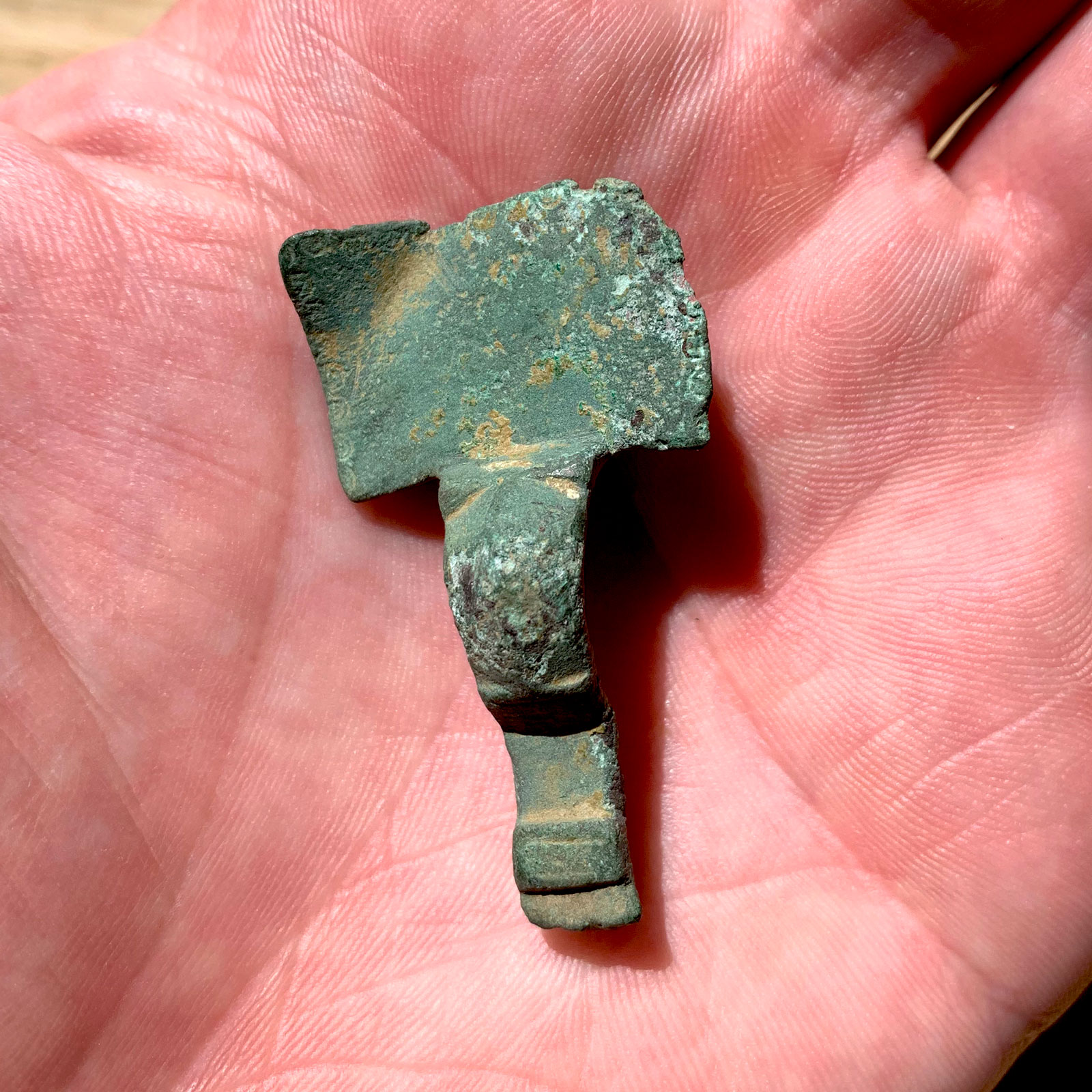
Anglo-Saxon small-long brooch front.
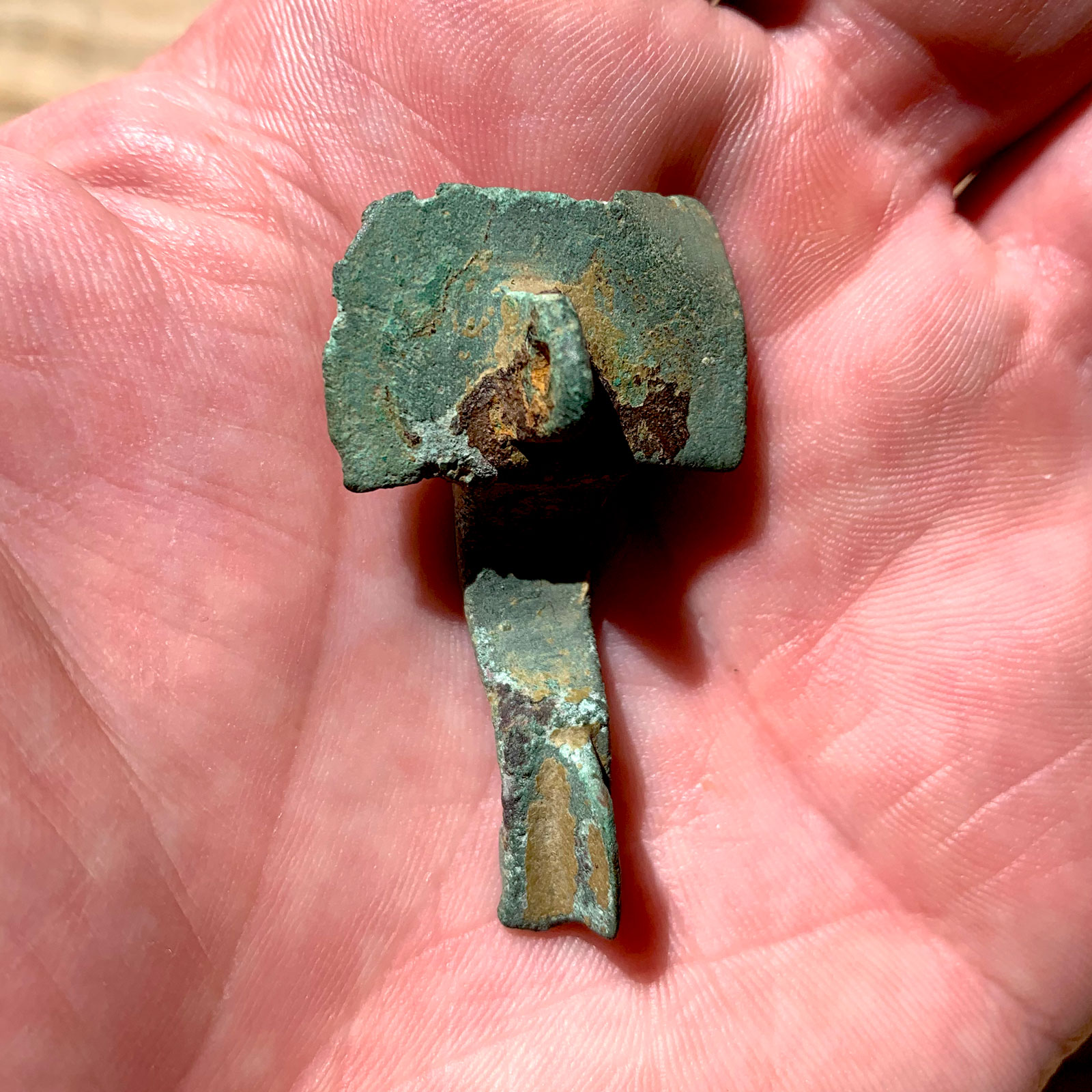
Anglo-Saxon small-long brooch back.
The star find of the day has to be the Anglo-Saxon small-long brooch. This is the second Anglo-Saxon small-long brooch that I have found but it is the first of this square head variety. I knew immediately what it was when I pulled it out of the ground but what I didn’t realise is that it’s a rare find for North Hertfordshire. I found this out upon reporting it to Keith Fitzpatrick-Mathews, the curator and heritage access officer for North Herts Museums.
Keith said “Small-long brooches are uncommon in North Herts, and I’m intrigued by the fact it’s come up with Late Roman coins. It would be amazing if there were a post-415 Honorius or a Valentinian III coin (they do turn up, but rarely). Small-longs, by the way, are dated c 420-550 AD.”
It’s entirely possible that there might be an example of one of Keith’s coin suggestions in the mix of coins found on this day out, but we will have to wait and see if FLO is able to discover that. But wouldn’t it be amazing to find an Anglo-Saxon coin in amongst all this Roman history. To think that this small patch of land is suggesting that there has been a transition in cultures from Celtic to Roman to Anglo-Saxon is just a brilliant thing to discover!
The surprise find of the day has to be the broken Roman fibula catch plate. Some will remember the broken Roman fibula brooch that I found at the end of last year which was missing the catch plate. Well this is that missing catch plate! I will have to wait until I visit FLO later this month to collect the fibula to reunite the two pieces, but when I do I will be sure to include it in any further updates of the detecting journey here.
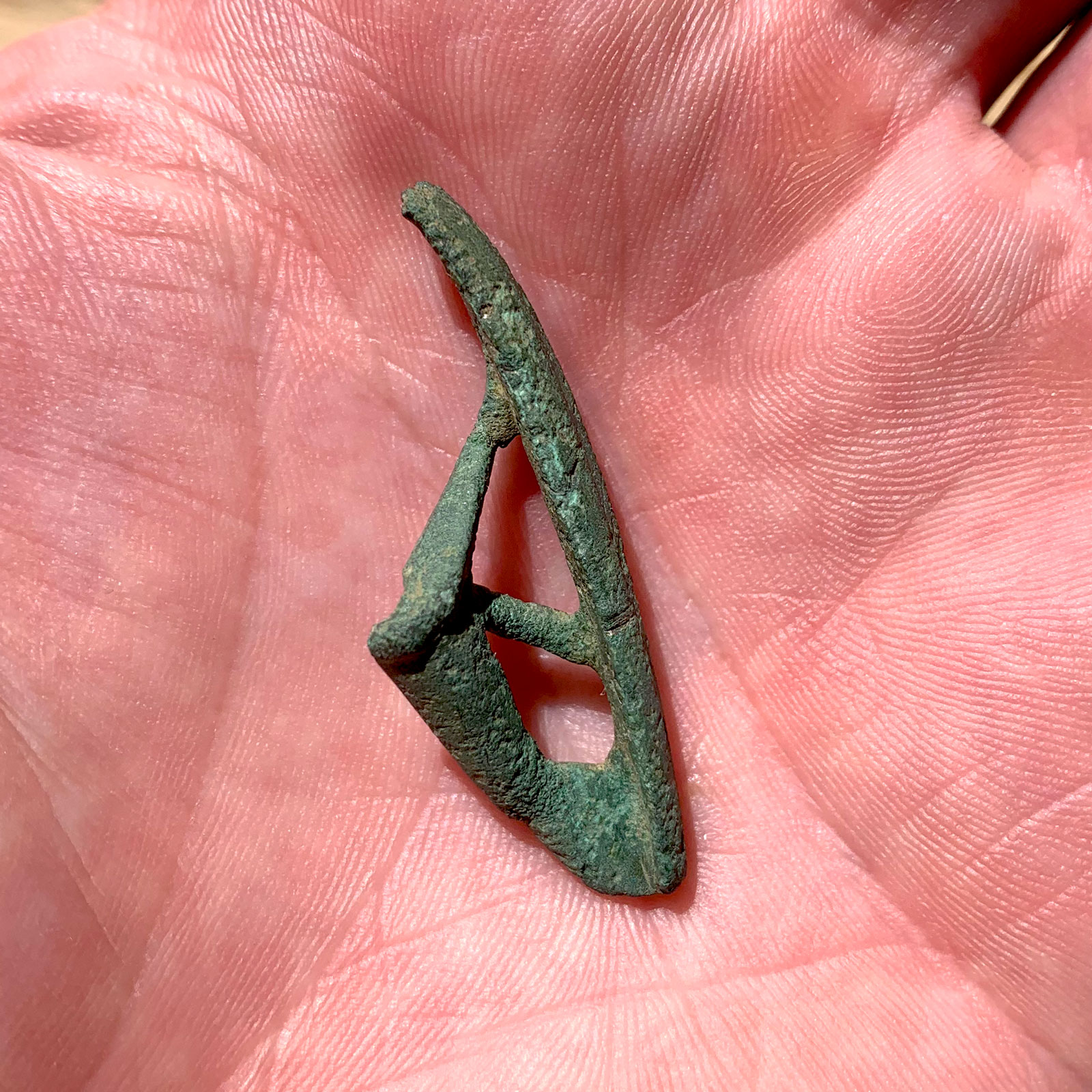
Broken fibula catch plate.

Comemorative Charles II cufflink.
That just leaves me to sing the praises of the Equinox 900, what a machine. I was a little bit dubious as to whether there would be much of an improvement over the 600, but an improvement it certainly is. With new internal workings and a much wider VDI range the 900 feels a lot more capable. Because of this the separation appears to be a lot better and it feels a lot more sure of itself when it locks on to targets. It’s going to be another learning curve but it is made easier with the display and features remaining largely unchanged. So that just leaves new and exciting adventures to be had, hopefully for years to come!
update…
A week after writing this blog I was back out on the same permission and I had rather an unusual find come up. Again I had a mix of later end Roman coins, but there was one which stood out from the others. Apart from the fact that it was in better condition than the rest it also had a very strange reverse.
At first when I brushed away the dirt with my thumb I could see the obverse was in relatively good condition, but the reverse looked completely worn. It was only on closer inspection that there appeared to be another bust on the reverse but it looked like it was concaved. I decided to email Sam Moorhead at the British Museum to see if he could shed any light on the anomaly to which he kindly replied…
“This is known as a brockage. It happens when the previous coin remains stuck to the die and strikes an incuse reverse with the obverse die, it’s a nice example. I think this is probably a son of Constantine I, dating to c. AD 330-41.”
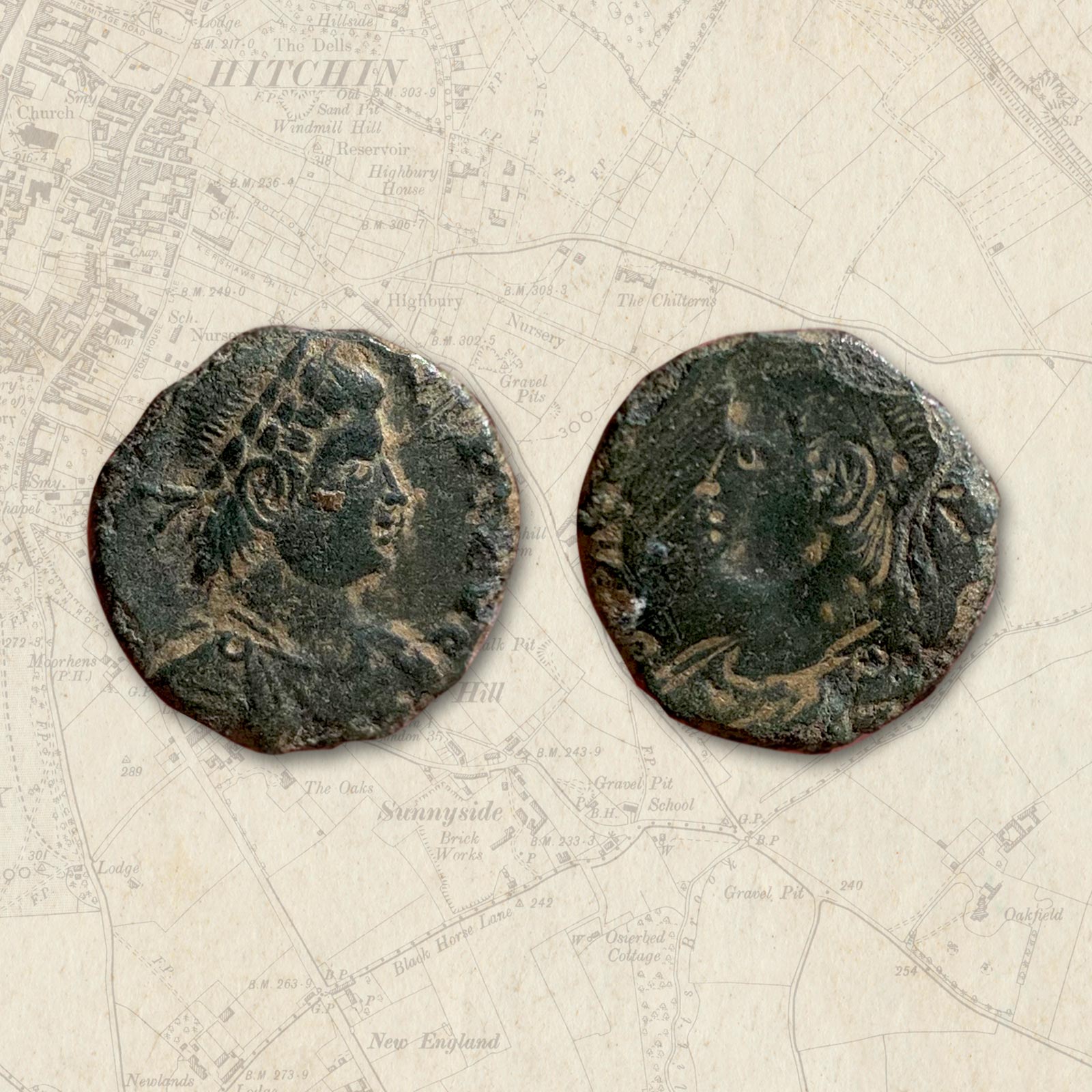
Roman brockage obverse & reverse, c. AD 330-41.
It would also appear that this coin anomaly is quite possibly a rarity in the detecting world as Julian Evan-Hart commented that it’s the first time that he had seen a ‘brockage’ metal detecting find. This is one of the many reasons that I love the hobby, it has that ability to present you with finds which are unusual and once found are unique to the finder, a definite bucket lister I never knew was on my list! You can view the Portable Antiquities Scheme record for this ‘Brockage’ Roman coin on the button below.
Don’t forget you can follow my detecting adventures on instagram and read more in-depth articles here on the printable website. For those that do follow me, thank you for the continued support, it’s all very much appreciated!
